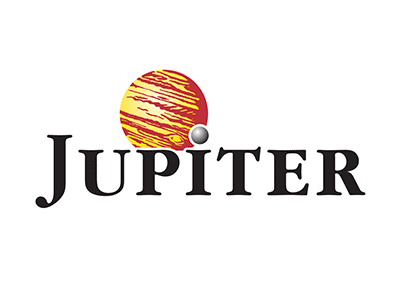Ariel Bezalel is a high profile manager with decades of experience of investing in bond markets
We think that managers at Jupiter are given autonomy to invest how they see fit
The fund provides diversified exposure to different types of bonds
This fund is on our Wealth Shortlist of funds chosen by our analysts for their long-term performance potential
How it fits in a portfolio
The managers aim to generate a combination of income and capital growth in excess of the IA £ Strategic Bond sector average over the long term. The fund invests in different types of bonds from all over the world, meaning it could be used as the foundation for the bond portion of a portfolio or could add some diversification to a portfolio focused on shares. However, investors should be aware that the managers’ investment style means that this fund can experience more ups and downs than peers.
Manager
The fund is co-managed by Ariel Bezalel, Head of Fixed Income at Jupiter, and Harry Richards. We think Bezalel is a talented and experienced bond manager who has added value for investors compared to the peer group since the fund launched in 2008. He has managed the fund since inception and has worked at Jupiter since 1997.
Bezalel was joined by Harry Richards in 2013 when he began working on the fund as an analyst. He became assistant fund manager in 2016 and co-manager in May 2018 Richards now has over a decade’s worth of experience, having joined Jupiter in 2011. The managers also have other fixed income responsibilities, but we think they have the support and resources to do a good job for investors.
Process
Bezalel and Richards analyse the state of the economy and use this to help them decide where to invest. This involves taking a view on which direction interest rates are likely to move in developed markets to build up a picture of how the economy will evolve. Although the managers can invest in bonds from around the world, at least 70% of the fund must be invested in bonds that are bought and sold in British pound sterling or whose currency exposure is hedged back to sterling. They also use other derivatives which increases risk.
Bezalel and Richards are willing to take more risks when they’re positive on markets. So, at times they will increase their investments in higher-risk areas like emerging markets and high-yield bonds. But when the outlook is more uncertain, they can adopt a more defensive approach and might invest more in government or higher quality corporate bonds in an effort to help shelter the portfolio from large drops in value.
The fund typically has what is called a ‘barbell’ approach. This means they have a lot invested in highly rated government bonds as well as a lot in lower rated, higher risk, corporate debt (called high yield). They don’t tend to invest much in the middle of the risk spectrum so their holdings in investment grade corporate debt tend to be small.
At the end of May 2025, they had 40.6% invested in developed market high yield debt and 31.9% in developed market government debt. They also had 13.6% in emerging market debt, made up of a combination of government and corporate bonds.
The fund’s duration currently stands at 7.8 years, having decreased from a recent peak of 10.5 years at the end of January 2025. Duration is measured in years and reflects how sensitive the fund is to interest rate changes. The higher the duration value, the more sensitive the fund is to interest rate changes.
While the team still think that interest rates could come down in both the UK and the US, they have concerns about the level of government borrowing and so don’t want to invest in bonds that mature a long way into the future.
Culture
The fund managers at Jupiter are given autonomy to invest the way they see fit. They believe this will benefit investors over the long run, but the autonomy comes with an appropriate level of challenge from others in the business. This business setup allows Bezalel and Richards to focus on fund management, their team, and maintain flexibility.
Fund managers at Jupiter are incentivised in line with the performance of their funds over various timeframes. We think this aligns their interests with those of investors and helps the managers to focus on delivering strong performance for clients.
ESG Integration
Jupiter’s approach to ESG is fund manager led, so the fund managers themselves are responsible for implementing ESG in their investment decisions. They typically approach ESG issues with a materiality-based approach, meaning they focus on the ESG risks most material to each company. The firm also subscribes to several third-party data providers (including Sustainalytics, RepRisk, ISS and MSCI) which offer information that fund managers can use in their research. Where red flags are raised, the managers investigate. Fund managers work closely with central ESG experts on ESG integration, engagement, and proxy voting and the fund managers’ commitment to these topics is a consideration in their annual appraisals.
We like that engagement is not delegated to a separate department. Instead, the fund manager who made the decision to invest in the company leads engagement activity directly, allowing more meaningful and relevant engagement. More information about the firm’s ESG policies and engagement case studies can be found in its annual Stewardship report.
Bezalel and Richards have incorporated ESG factors into their analysis and have an ESG materiality risk score for all bonds that they assess. They have also launched additional products where exclusions based on ESG criteria have a bigger impact on what bonds they invest in. Overall it is good to see that the managers are taking ESG risks seriously and do incorporate these into their bond selection. For this particular fund though, the risk-return profile of potential investments is the most important thing.
Cost
The fund has an annual ongoing fund charge of 0.74%, but through Hargreaves Lansdown you can secure an ongoing saving of 0.19%. This means you’ll pay an ongoing charge of 0.55%. Part of this reduction is paid as a loyalty bonus, which could be taxable if held outside of an ISA or SIPP wrapper. The HL platform fee of up to 0.45% a year also applies, except in the HL Junior ISA, where no platform fee applies.
Performance
The fund's flexible approach has meant that since inception in 2008 it has outperformed its peer group. Over this time, the fund has delivered a return of 119.88%* compared with a return of 116.75% for the IA £ Strategic Bond peer group**.
The flexibility afforded to the managers means the fund often performs differently to peers. For example, during the significant bond market falls in 2022, where the fund lost 15.58% compared to the sector average fall of 11.73%. Past performance is not a guide to the future.
Over the past year to 30 June the fund has returned 6.16% compared to the IA £ Strategic Bond average return of 6.98%. Bond markets have continued to be volatile over this period as investors have grappled with the implications of Trump coming into power and more recently the threat of tariffs. For example, the yield on 10-year US Treasuries had a low of around 3.6% in September 2024 and a high of 4.8% in early 2025. Similarly, the yield on 10-year gilts (UK government bonds) had a low of just under 3.8% and a high of 4.9%. Remember that bond prices move in opposite directions to yields and that the prices of corporate bonds tend to move in the same direction as government bonds.
So far during 2025, investments in corporate bonds have added most value for the fund, in particular those in more risky high yield bonds. Government bonds have also added value, but less than investments in corporate bonds.
Over the five years to 30 June 2025 the fund has underperformed the sector’s peer group average, gaining 2.13% compared to 10.75%. While this is disappointing, it has been a challenging time to invest in bond markets. As noted above, 2022 was a difficult year where bonds lost significant value due to the interest rate rising cycle. Since 2022, wider economic conditions have made predicting what will happen to inflation and central bank interest rates challenging. During this period there have often been large moves in bond prices, both up and down, as expectations about future interest rates have changed. The managers have been invested for central banks to cut rates during this time and while there have been some reductions to interest rates, the amount of these has been lower than they expected. This has been a drag on performance.
While there are no guarantees how the fund will perform in future, Bezalel and Richards have significant experience in a sector where experience counts.
At the end of May, the fund offered a yield of 5.23%, although yields are variable and aren’t a reliable indicator of future income.
** Please note that this data is for Class L units in order to show performance since the fund was launched. The performance noted below is using Class Z units, which are available to investors with HL and have lower ongoing charges.
June 20 – June 21 | June 21 – June 22 | June 22 – June 23 | June 23 – June 24 | June 24 – June 25 | |
|---|---|---|---|---|---|
Jupiter Strategic Bond Fund | 4.07% | -12.70% | -1.04% | 7.05% | 6.16% |
IA £ Strategic Bond | 6.62% | -10.70% | -0.25% | 9.00% | 6.98% |


